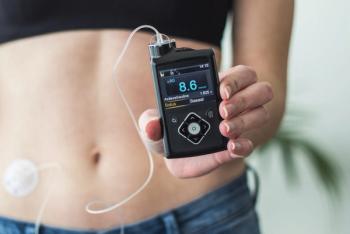
OTC Birth Control Improves Access to Contraception for Patients With Structural Barriers
Investigators found that Opill increased access for patients who were uninsured, identified as Black or Latina, had lower education, and lived in the Southern United States.
OTC oral contraceptive pills improve access to effective contraception in the United States, especially for patients with structural barriers to care. In an article published in JAMA Network Open, investigators showed that OTC oral contraception was accessed by many patients who used no methods or less-effective methods of contraception.1
“If we see maybe a patient in the aisle who has that inquisitive look, or if they come and speak to us, it's going to be important first to make sure that we talk to them in a noncoercive, nonjudgmental-type environment,” Jasmine Cutler, PharmD, CPh, assistant professor in the department of pharmacy practice at Taneja College of Pharmacy,
The
With the approval, the OCT availability was aimed at reducing barriers to access for people to obtain the medication without the need for a prescription. It is available in stores and online, with
In the cross-sectional study, investigators evaluated whether OTC oral contraception improved access for patients with structural barriers, including adolescents, patients in rural areas, and patients who are uninsured. Further, they evaluated whether the availability helped reach patients who had not previously used or had used less-effective contraception. Patients aged 15 to 49 years who obtained oral contraception at the pharmacy or online retailers were included in the study. There were 63 pharmacies across 31 states included, according to the study investigators. Additionally, investigators collected demographic, health history, pregnancy intention, and preference data for all patients. The study outcomes included moving from nonuse to using oral contraception and moving from less-effective methods to oral contraception.1
The study included 986 patients, with 70.2% being single and 34.4% being aged 20 to 24 years. Regarding race and ethnicity, 2.4% of patients were American Indian or Alaska Native, 13.3% were Asian, 9.8% were Black, 11.8% were Hispanic or Latina, 1.2% were Native Hawaiian or Pacific Islander, 73.1% were White, and 0.1% were of unknown race and ethnicity. Investigators found that a higher proportion of young patients aged 15 to 20 years used OTC oral contraception compared with prescription methods, as did more patients who were uninsured, identified as Black or Latina, had a lower level of education, and lived in the Southern United States.1
The study authors reported that 10 of 17 states in the South had more than 3 OTC users for every 4 prescription users, which was the highest region in the US, and only 1 of 13 states in the West had 3 OTC users for every 4 prescription users. However, 8 of 13 states in the US had fewer than 1 OTC user for every 4 prescription users. States with the greatest OTC to prescription ratio included Arkansas, Delaware, Florida, Kentucky, Louisiana, and Oklahoma.1
Patients using OTC oral contraception were more likely to have a history of pregnancy and had more frequent reports of vaginal intercourse than prescription users. Further, they were also less likely to receive contraceptive counseling within the last 12 months and use any modern method of contraception at baseline, according to the study authors. Of OTC users, 42.2% were already using a more or the most effective contraception method before their pharmacy visit compared with 83.9% of prescription users.
The most common reasons for patients using OTC contraception included not requiring an appointment, not having a regular physician, and efficiency. The study authors reported that OTC users had a probability of approximately 50% of moving from no contraception or less-effective contraception. Furthermore, OTC users were estimated to be 31.8 percentage points more likely to move from nonuse of contraception and 41 percentage points more likely for less-effective contraception.1
“OTC OCP [oral contraceptive pill] users in our sample were more likely to be uninsured and reside in rural areas, underscoring the promise of OTC availability in bridging gaps where health care access is limited,” the study authors said. “These findings are particularly salient in the context of ongoing threats to reproductive health care access under proposed federal and state-level policy changes.”
READ MORE:
Ready to impress your pharmacy colleagues with the latest drug information, industry trends, and patient care tips? Sign up today for our
REFERENCES
1. Rodriguez MI, Burns H, Sheridan R, Edelman AB. Over-the-counter oral contraceptive use and initiation of contraception. JAMA Netw Open. 2025;8(8):e2527438. doi:10.1001/jamanetworkopen.2025.27438
2. Gallagher A, Cutler J. Q&A: Education, Accessibility Is Key for Reproductive Health Care | APhA 2025. Drug Topics. April 3, 2025. Accessed August 19, 2025. https://www.drugtopics.com/view/q-a-education-accessibility-is-key-for-reproductive-health-care-apha-2025
3. Meara K. FDA Approves First OTC Birth Control Pill in United States. Drug Topics. July 13, 2023. Accessed August 19, 2025. https://www.drugtopics.com/view/fda-approves-first-otc-birth-control-pill-in-united-states
4. Massaro L. GoodRx, Opill Partner on OTC Delivery Program to Address Gaps in Access. Drug Topics. October 31, 2024. Accessed August 19, 2025. https://www.drugtopics.com/view/goodrx-opill-partner-on-otc-delivery-program-to-address-gaps-in-access
Newsletter
Pharmacy practice is always changing. Stay ahead of the curve with the Drug Topics newsletter and get the latest drug information, industry trends, and patient care tips.




































































































































